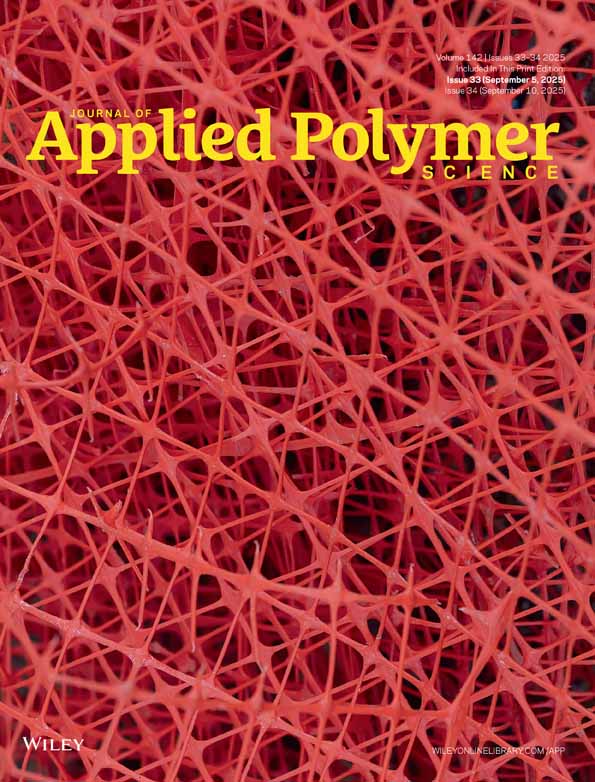Microporous membrane with temperature-sensitive breathability based on PU/PNIPAAm semi-IPN
Abstract
The semi-interpenetrating polymer network (semi-IPN) of thermoplastic polyurethane (TPU) and poly(N-isopropylacrylamide) (PNIPPAm) was synthesized and fabricated into microporous membranes with temperature-sensitive breathability. The chemical and physical structure of the semi-IPN was investigated by FTIR and thermo analysis including DSC and DMA. The results proved that the glass transition temperature of TPU and the LCST of PNIPAAm were shifted in the semi-IPN, revealing the formation of interchain interactions among the molecular chains of TPU and PNIPAAm. The swelling measurements revealed that the semi-IPN shows volume phase transition behaviors. The semi-IPN was therefore fabricated into microporous membranes and its volume phase transition property was employed to endow the membrane with temperature-sensitive breathability. The water vapor permeability of the membranes was measured and found to be significantly dependent on the temperature, which was enhanced remarkably when the temperature went up. © 2011 Wiley Periodicals, Inc. J Appl Polym Sci, 2012




